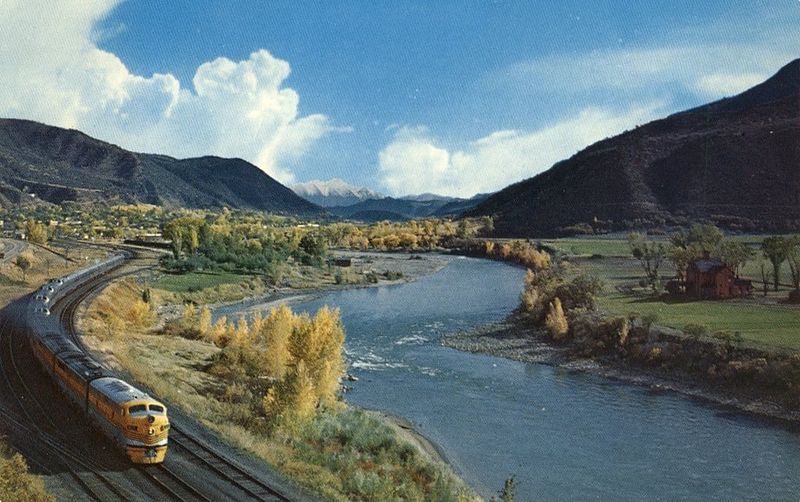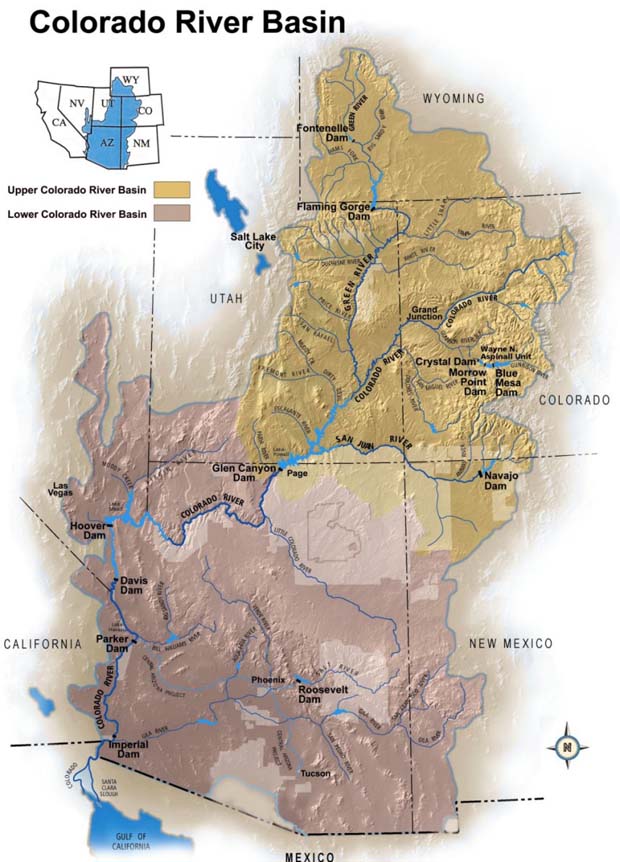“We’re at a critical point with the supply-and-demand imbalance. Climate change and population growth are expected to exacerbate that,” said Matt Niemerski, director of Western-water policy at American Rivers. “There is no silver bullet here. If we don’t improve management, the system will break.”
A new study out of Columbia University predicts that warming temperatures will reduce the Colorado’s flow by 10 percent over the next few decades, while an Interior Department study of the Colorado River Basin predicts shortfalls in the river’s ability to deliver water currently allocated.
“There are 10 rivers on this list (of endangered rivers). None are remotely close to the importance of the Colorado. Every major city in the Southwest depends on it, even those outside the basin. The ranking is highly deserved,” said Brad Udall, a hydrologist and water-policy expert at the University of Colorado.
“You have an enormous impending collision between 19th-century water law, 20th-century infrastructure and 21st-century population growth and climate change. To resolve this we will need to think long and hard about solutions, none of which have to do with supply and everything to do with savvy management.”
Fed by several major tributaries, the Colorado originates under the Continental Divide in Rocky Mountain National Park. It hits the first diversion 20 miles from its source, then stair-steps behind a series of massive dams, forming Lake Granby, Williams Fork Reservoir, Lake Powell, Lake Mead, Lake Mojave, Lake Havasu and ending at Morelos Dam on the Mexican border.
Five trillion gallons a year are siphoned away, ensuring that the river entering Mexico is nothing more than a ghost, according to Gary Wockner, director of Save the Colorado. Yet several projects seek to pull out even more water.
“Utah is the apex of river-destruction projects on the Colorado,” Wockner said, pointing to the proposed Lake Powell pipeline and Green River nuclear-power plant.
“Utah is proposing several pork-barrel water projects … to prevent other states and ecosystems from using this water. It’s childish, destructive and a waste of money,” added Zach Frankel, executive director of Utah Rivers Council. “Utah is America’s most-wasteful water user and now this waste is impacting the other 35 million people in the basin.”
The U.S. Bureau of Reclamation, the agency that built some of the river’s major diversions, praised the report for drawing attention to the collaborative efforts under way to address the Colorado’s problems.
“The study is a critical first step in the basin to establish a common technical foundation from which important discussions can begin regarding possible strategies to reduce future supply-and-demand imbalances,” said Anne Castle, the Department of Interior’s assistant secretary for water and science. She singled out a recent supplement to the 1944 water treaty with Mexico that is expected to allow the Colorado to flow into the Gulf of California for the first time in decades.
The report urged Congress to follow up Interior’s Colorado River Basin study with “bold action” and funding for water-saving technologies and new water-sharing mechanisms. It highlighted Reclamation’s WaterSMART and Title XVI programs, which help return reclaimed water to the river and allow for more effective use of existing diversions and pipelines.
(Reach Brian Maffly at bmaffly@sltrib.com. Distributed by Scripps Howard News Service
2013 Top 10 Endangered U.S. Rivers
No. 1. Colorado River (Arizona, California, Colorado, Nevada, New Mexico, Utah and Wyoming). Threat: Outdated water management.
No. 2. Flint River (Georgia). Threat: Outdated water management.
No. 3. San Saba River (Texas). Threat: Outdated water management.
No. 4. Little Plover River (Wisconsin). Threat: Outdated water management.
No. 5. Catawba River (North Carolina, South Carolina). Threat: Coal-ash pollution.
No. 6. Boundary Waters (Minnesota). Threat: Copper- and nickel- mining.
No. 7. Black Warrior River (Alabama). Threat: Coal-mining.
No. 8. Rough & Ready and Baldface Creeks (Oregon). Threat: Nickel- mining.
No. 9. Kootenai River (British Columbia, Montana and Idaho). Threat: Open-pit coal-mining
No. 10. Niobrara River (Nebraska, South Dakota, Wyoming). Threat: Sediment buildup and flooding.
Source: American Rivers



